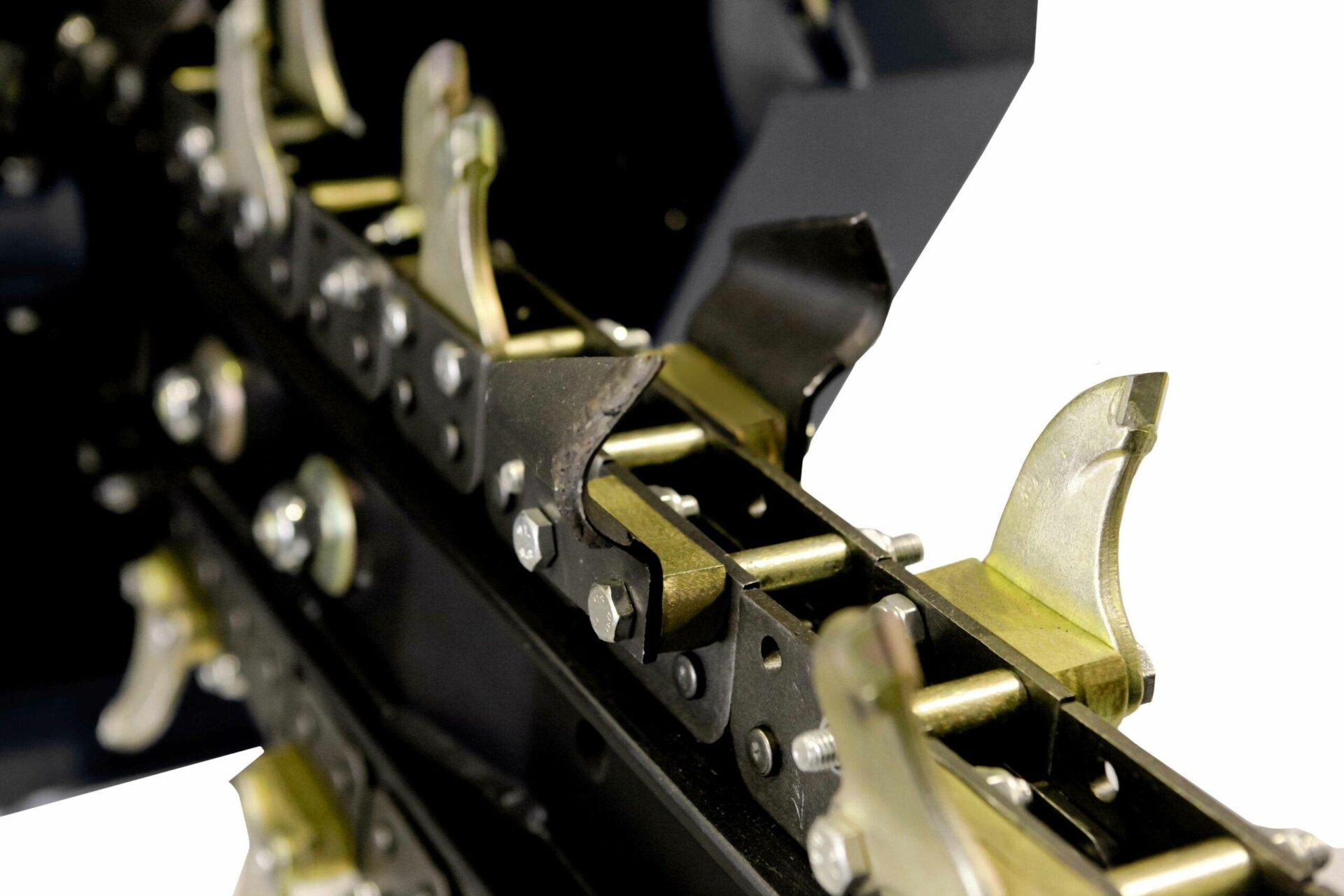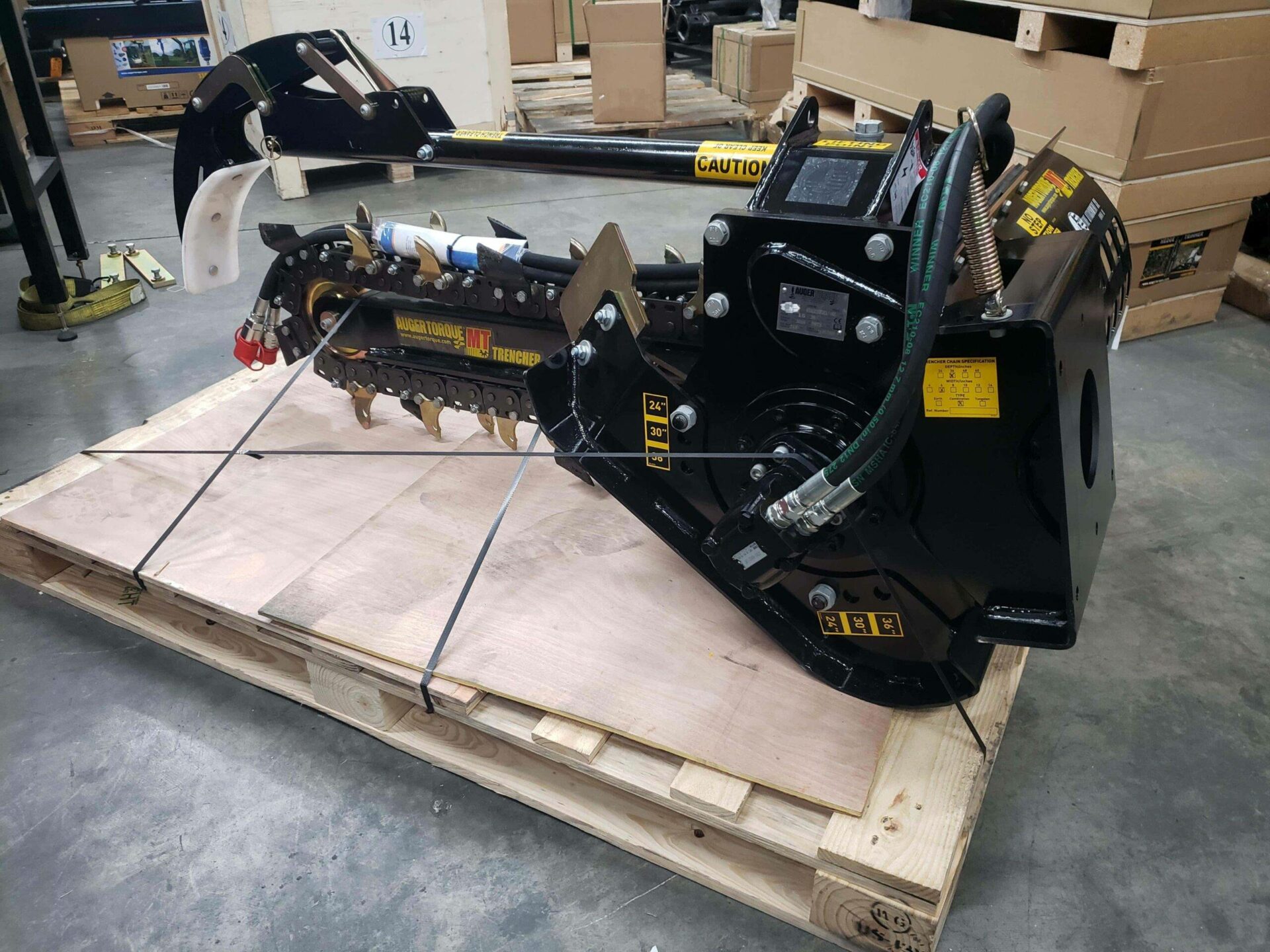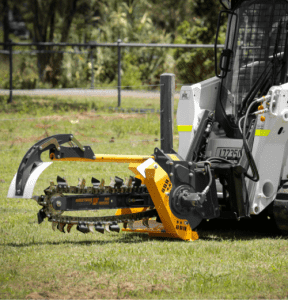Maximizing Your Skid Steer with Trencher Attachments: A Comprehensive Guide
If you own a skid steer, you know just how versatile and indispensable these machines can be. But did you know that you can make your skid steer even more versatile and capable with the right attachments? One attachment that can greatly enhance your skid steer’s capabilities is a trencher attachment. In this blog post, we’ll take a comprehensive look at skid steer trencher attachments and how they can help you tackle a wide range of digging and trenching tasks with ease.
What is a Trencher?
A trencher attachment is a device that is usually attached to the front end of a skid steer, or onto an excavator to transform it into a trench digging machine. Trencher attachments come in a range of sizes and designs, making them suitable for digging trenches for a variety of applications, including drainage, plumbing, electrical, and landscaping.
Types of Trencher Attachments
There are several types of trencher attachments available, each designed to meet specific needs and requirements. The two most common trencher types are:
Chain Trenchers: These trenchers use a rotating chain with cutting teeth to dig into the ground and create a trench. They are best for digging in soft or loose soil, and are available in different sizes for different trenching depths. These are what you will find on excavators and skid steers.
This is what we would traditionally think of as a trencher attachment for a skid steer. There are also older dedicated trencher machines that use the same design and technology. However these can only be used for trencher whereas a skid steer trencher can be swapped out for a lot of other attachments to help with other jobs/tasks.

Wheel Trenchers: Wheel trenchers use a wheel with cutting teeth to dig into the ground, creating a trench. These trenchers are best for digging in harder soil and are capable of digging deeper and wider trenches than chain trenchers.
Chain Trencher Attachments for Skid Steers & Excavators
Trencher attachments for skid steers and excavators use a hydraulic motor and planetary gearbox with a sprocket to drive the chain. The chain engages with the ground and moves the dirt up the chain to the auger. The auger then neatly movies dirt to the side of the trench.
There are a variety of chain types of trencher attachments. Mostly what we provide is called a combination chain. The chain has a combination of earth/dirt teeth to move the dirt, and tungsten carbide, shark like, teeth to break up the ground. You can however get a chain that has all of the same teeth. A chain of completely earth teeth would be used in softer ground whereas a complete carbide chain would be used in harder ground.
There are other types of trencher chain teeth in the market to deal with harder or more rocky conditions as shown below:


Advantages of Skid Steer Trencher Attachments
There are many advantages to using skid steer trencher attachments, including:
Speed and Efficiency: With a skid steer trencher attachment, you can quickly and efficiently dig trenches, reducing the time and effort required to complete the job. Neatly displacing the dirt to one side of the trench makes it easier and faster to backfill the trench.
Accuracy: Trenchers allow the operator to work at a specific depth and width. You can dig an accurate trench at a desired depth and width without effort maintaining the correct depth. Our trenchers have depth control that allows you to vary the digging depth of the trench.
For example with our 48” trencher, you can dig at 32”, 40” as well as 48”.

Versatility: Skid steer trencher attachments are highly versatile, allowing you to tackle a wide range of digging and trenching tasks with ease.
Also since there are many other skid steer attachments on the market, you can easily switch to another attachment to complete another job once you are done trenching.
Cost-Effective: Compared to traditional digging methods, using a skid steer trencher attachment can be much more cost-effective, especially for smaller projects. As mentioned a trencher attachment is much cheaper than a dedicated trencher unit.
Improved Safety: Trencher attachments allow you to dig trenches from the safety of your skid steer, reducing the risk of injury and improving the overall safety of the job.
Purchasing a Trencher Attachment For a Skid Steer
Firstly, you will have to determine how deep and wide that you want to dig your trenches.
The maximum depth and width that you can dig with your skid steer will be determined by the size and hydraulic flow and pressure of your machine. The most common trencher on the market for skid steers with standard flow hydraulics (anything up to 25-30 GPM) will be able to trench 48” (4 feet) deep.
If you have a larger skid steer with flow over 30 GPM you can use a high flow larger trencher unit that can go as deep as 5 feet. Also with a bigger machine you will be able to dig a wider trench at 4 feet compared to a standard unit. Here is the breakdown of the skid steer trenchers that we offer at The Attachment Company:
Auger Torque MT Trenchers: Hydraulic Flow from 12 to 27 GPM
- Auger Torque MT24 Trencher: 24” deep – Maximum 12” Wide
- Auger Torque MT36 Trencher: 36” deep – Maximum 10” Wide
- Auger Torque MT48 Trencher: 48” deep – Maximum 8” Wide
Digga XD High Flow Trenchers: Hydraulic Flow from 25 to 45 GPM
- Digga XD High Flow Trencher: 48” deep – Maximum 12” Wide
- Digga XD High Flow Trencher: 60” deep – Maximum 12” Wide
Installing Your Trencher Onto Your Skid Steer
Most trenchers come delivered to you ready to go straight to work. Our trenchers all come with hoses and flat face couplers to connect straight to the machine. It’s just a matter of picking up the unit, connecting the hoses and you are ready to go to work.
Be sure to check the manual for any run in periods and to familiarize yourself with the operation of the attachment. Also to check for maintenance schedules to look after your trencher to enable you to enhance its longevity.

Conclusion
In conclusion, skid steer trencher attachments are a great investment for anyone who owns a skid steer. Whether you need to dig trenches for drainage, plumbing, electrical, or landscaping, a trencher attachment can help you tackle the job with ease and efficiency. With the right trencher attachment, you can make the most of your skid steer, completing projects faster and more cost-effectively.


It’s helpful to learn that we’d consider our project’s depth and width before buying a trencher attachment. I heard one of my friends is starting to build his house this year and wants to save money on labor by renting machinery and operating it. He’ll benefit from learning how to pick the right machinery to dig a trench.
Great article! Trencher attachments can indeed take the versatility of a skid steer to the next level. The insights provided here on maximizing efficiency and safety are valuable. It’s always good to explore the full potential of equipment like skid steers, and this article does a fantastic job highlighting the benefits of incorporating trencher attachments. Looking forward to more informative content like this!
Wow, what an incredibly insightful and comprehensive guide! As someone who’s always looking to optimize the functionality of my skid steer, I can’t thank you enough for putting together such a detailed resource on trencher attachments.
Overall, this guide is a must-read for anyone looking to optimize their skid steer with trencher attachments. Thank you to the author for sharing such valuable insights!.
This comprehensive guide provides valuable insights for anyone looking to enhance their skid steer’s capabilities with trencher attachments. Thanks for sharing!